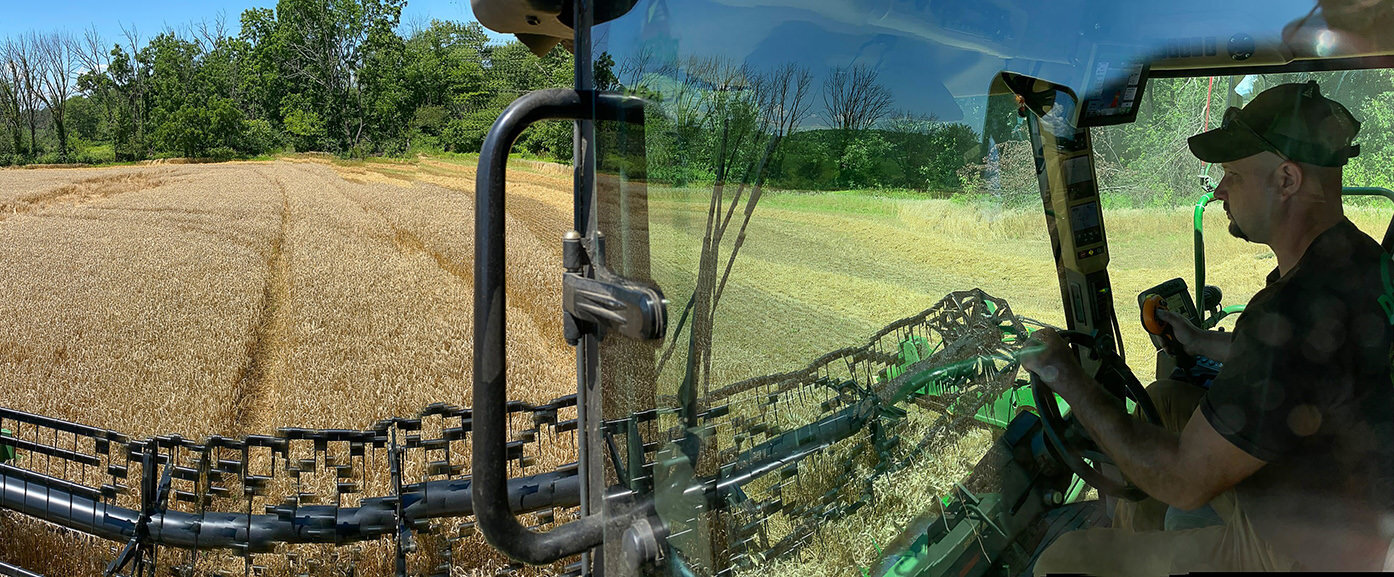
Written by Art Petrosemolo
We are months into our new lifestyle in the United States as scientists work to develop a vaccine for the coronavirus while doctors and medical personnel treat the thousands who fall ill—sometimes very seriously.
All the while, life goes on and we work hard to keep ourselves safe from falling victim to COVID-19 by staying close to home, wearing masks and social distancing in public. As we do this and pray for a return to the something close to the normal we remember, farm life and work in Lancaster County is still going on. The bumper wheat crop this season is yielding more than 100 bushels of grain per acre this season—mostly flour grade. Recently, during this hot July weather, I had a chance to write about and photograph this record wheat harvest from two perspectives. The experiences were both eye-opening and fascinating and, as usually happens when I experience something new, translated into an interesting story and images for my readers at Lancaster Farming.
First, I spent an afternoon with my Old Order Mennonite Thirty-Fivers (a very conservative Mennonite sect) Hoover family friends on Reidenbach Road here in New Holland while they harvested their wheat fields the old-fashioned way. The fields were cut with a horse team pulling a cutter. The wheat was moved by hand from the field to a horse-drawn wagon and then transferred to a gasoline-powered, belt-driven thresher. The grain and straw were separated with the grain going into a bin and the straw spread in the barn to be used as animal bedding. It was a multi-day process and took the Hoover’s five adult men and two adult daughters to get it done.
Later in the month, I traveled some 30-plus miles north to Bethel, PA, near the intersection of Interstate 78 and PA Route 501 to the Bomgardner farm. I met with Jake Degler of Degler Ag Services to spend the afternoon on a huge John Deere 9770 STS Combine that cuts wheat, separates the grain into a bin and leaves the straw in a neat row to be baled. It does it all in one operation and covered an acre in a fraction of the time that the Hoover men were able to using their time-honored, Old Order, Plain Sect methods.
First, I was not surprised at the combine’s size. Even so, it looked like a green monster as I approached the 35-feet long, nearly 13-feet high sleeping giant, weighing some 37,000 pounds with a 300-bushel grain tank. I learned the machine combines three separate operations—reaping, threshing and winnowing—into a single process. My host Jake had the behemoth fired up as—with two cameras slung over my shoulders—I navigated the eight-step, vertical ladder to the operating cab. I was pleasantly surprised to see that the cab had air conditioning that was certainly going to help in the 85-degree heat.
Degler is hired by farmers to harvest small grain—wheat and barley, as well as corn and beans—right through late fall. The SDS combine had a single rotor, Degler explained, but handled what he thought was pretty much flour-grade wheat easily.
Degler had purchased the combine in the fall of 2019 and had worked some 1500 acres at the end of the 2019 season. This July was the midpoint of his first full season of harvesting. He had recently installed a GPS unit that when fully operational and adjusted would take over much of the driving for him during what is more than a regular workday in the cab.
With the combine’s windshield clean and crystal clear, I was able to photograph the wheat as it was cut and fed into the machine for threshing and winnowing, as well as wide-angle photos of the field, cab and Degler driving from a small platform outside the cab door.
Two hours went by like five minutes, as my head was on a swivel taking in the power and capabilities of a modern agricultural machine. I thought of my Old Order Mennonite friends taking the good part of a day to do what we were doing in a fraction of the time.
As a retired, transplanted city guy who has spent most of my recent summers photographing major sailing regattas up and down the East Coast, it was another part of my farm education and one I’ll remember for a long time. And yes, I was pleased with the photographs.